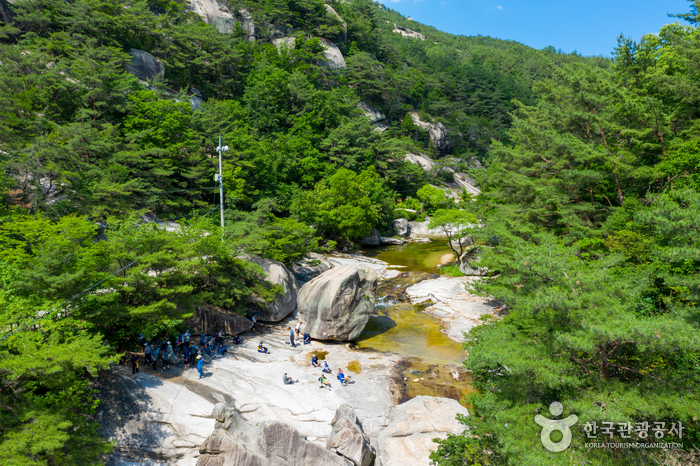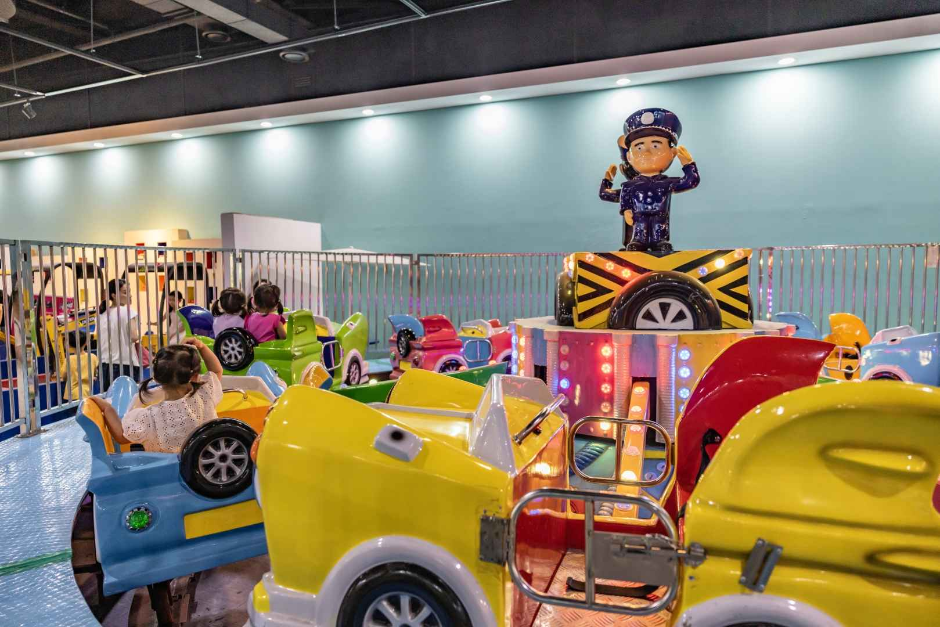Seonyudonggyegok Valley (선유구곡(선유동계곡))
17.9Km 2021-07-29
179, Seonyudong-gil, Goesan-gun, Chungcheongbuk-do
+82-43-832-4347
Seonyudonggyegok Valley is located in Goesan-gun, Chungcheongbuk-do Province. Including Seonyudongmun, the playground for the mountain gods, a total of nine valleys form the area: Gyeongcheonbyeok, Haksoam, Yeondallo, Waryongpok, Nangadae, Gigugam, Guam, and Eunseonam.
Seonnyudonggyegok Valley is famous for the legend that mountain gods came to savor fresh mountain spring water. A renowned geographical account, Taekriji, published in 1751, stated that Seonyudonggyegok Valley boasted some of the best scenery. One of the most eminent Confucian scholars of the Joseon dynasty, Lee Hwang spent nine months in this beautiful valley. He gave names to all his favorite places, which still remain to this day.
Gangseo Myeonok (강서면옥)
18.3Km 2024-03-25
35 Dongpyeon-gil, Boeun-eup, Boeun-gun, Chungcheongbuk-do
043-544-3895
Since its establishment in 1979, Gangseo Myeonok has specialized in crafting authentic memil naengmyeon (cold buckwheat noodles). The noodles are freshly made in-house, using high-quality buckwheat sourced from Bongpyeong in Gangwon-do, a region renowned for its premium buckwheat. What sets their memil naengmyeon apart is the exquisite broth, a harmonious blend of Korean beef brisket and the crisp, refreshing water of dongchimi (radish water kimchi). This unique combination results in a soup that’s both refreshing and subtly flavored, ensuring the noodles are tender and accessible to a wide array of palates. The restaurant is conveniently located near the Boeun Intercity Bus Terminal and the bustling Boeun Traditional Market.
Mungyeong, former Gaeun Station (문경 구 가은역)
18.5Km 2025-01-30
2441, Daeya-ro, Mungyeong-si, Gyeongsangbuk-do
+82-54-550-6401
Mungyeong, former Gaeun Station is a whistle stop in Wangneung-ri, Gaeun-eup, Mungeyong-si, Gyeongsangbuk-do. The station was designated as Registered Cultural Property No. 304 on December 4, 2006.
Gaeun Open Set (문경 가은오픈세트장)
18.9Km 2024-03-18
112 Wangneung-gil, Gaeun-eup, Mungyeong-si, Gyeongsangbuk-do
Gaeun Open Set is a filming site located within Mungyeong Ecoworld. Through in-depth historical research, it realistically recreates the city in the old days, making it an important location for TV series and history education. There are a total of three filming locations. The first filming location has palaces, including Goguryeo Palace, thatched-roof houses, inns, and a grand gate of actual size. It is known as the filming location for various dramas such as "The King of Legend (2010)," "Ja Myung Go (2009)," "Yeon Gaesomun (2006)," and "Strongest Chil Woo (2008)." It is still popular as a filming location for many other dramas. Also located within Mungyeong Ecoworld is the Coal Museum, so many tourists visit them together. It is possible to travel from the Coal Museum to the first filming location by riding the monorail, which runs every 15 minutes.
Mungyeong Eco World (문경에코월드)
19.0Km 2025-10-24
114 Wangneung-gil, Gaeun-eup, Mungyeong-si, Gyeongsangbuk-do
◎ Travel information to meet Hallyu’s charm – TV series “Queen of Tears”
This is the amusement park Da-hye visited with her family before parting ways. This park is loved by many family visitors because of its various attractions. As you walk through the park and enjoy the sights, you will undoubtedly recall the emotional scene from the drama, where Da-hye hesitated to leave and Soo-cheol’s heartfelt plea to hold onto her brought tears to the audience.



 English
English
 한국어
한국어 日本語
日本語 中文(简体)
中文(简体) Deutsch
Deutsch Français
Français Español
Español Русский
Русский